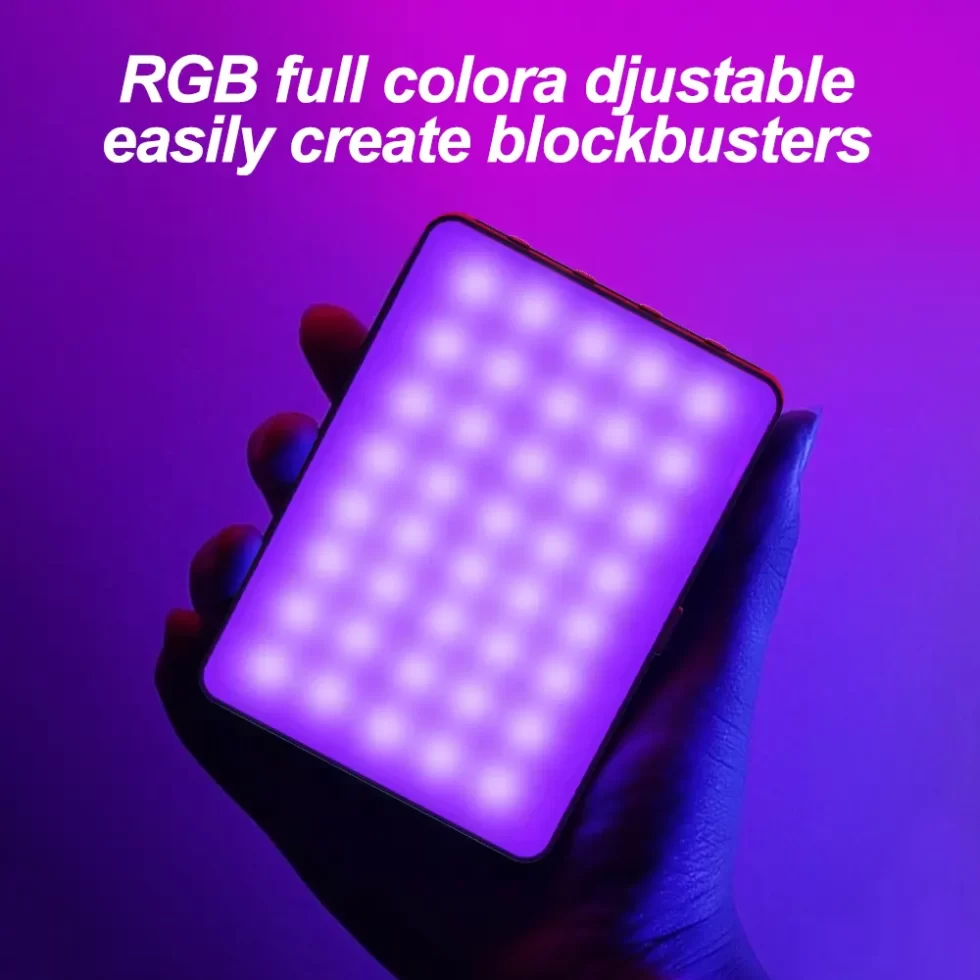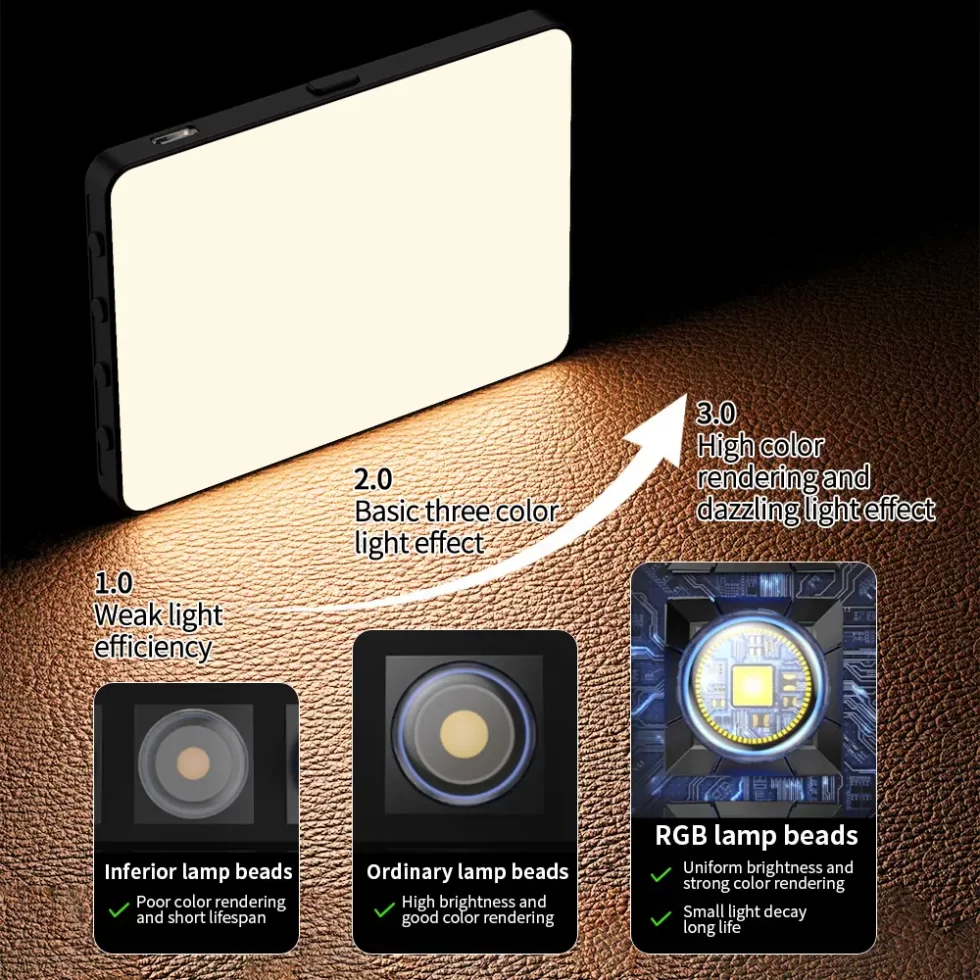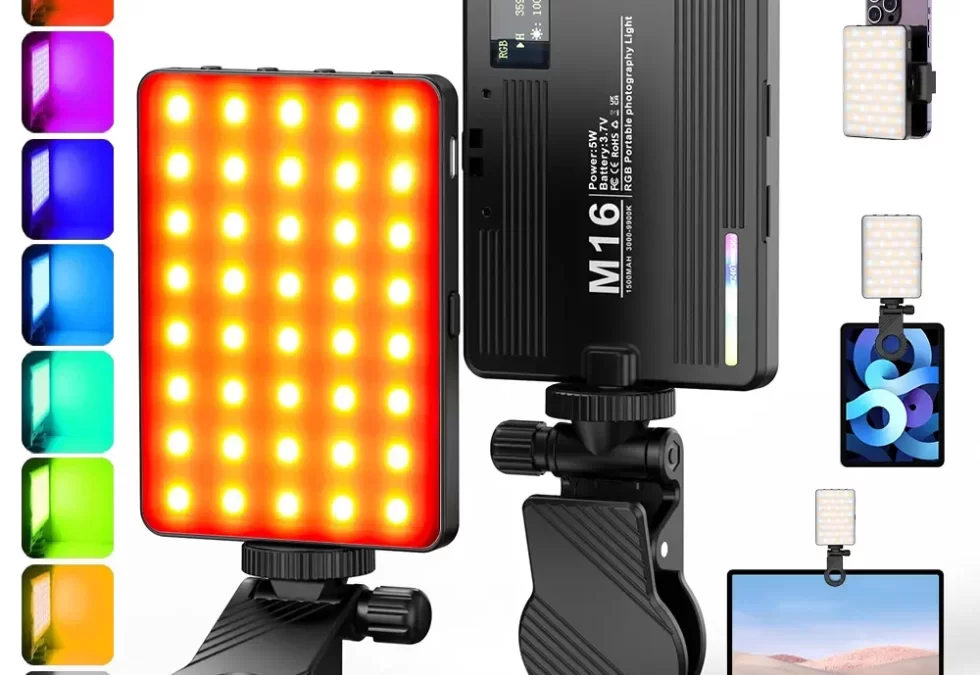Photography is the art of capturing the perfect balance of light, and the right light can elevate any image to a professional level. LED fill lights have become an indispensable digital photography tool for photographers and videographers. Whether you’re shooting portraits, still life, or product photography, LED fill lights can be essential in achieving the perfect shot. However, choosing the right LED fill light can be challenging, especially for those new to photography or considering upgrading their existing setup. In this article, we’ll walk you through the key factors to consider when choosing the right LED fill light for your photography setup.
The Role of LED Fill Lights in a Photography Setup
Before discussing the technical aspects of choosing an LED fill light, it’s essential to understand its role in a photography setup. The primary purpose of fill light is to soften shadows and evenly distribute light in a scene, reducing contrast and creating a more aesthetically pleasing, more balanced image.
In a typical lighting setup, the key light is the primary light source, while the fill light complements it by filling in the shadows created by the key light. Without a fill light, your images will have harsh shadows, which can be undesirable, especially in portrait photography or product shots, where sharp details are required. LED fill lights can effectively perform this role, providing a soft, even light output that doesn’t overpower the glow of your key light.
Key Factors to Consider When Choosing an LED Fill Light
When choosing the right LED fill light, several factors must be considered. Each factor affects how the light interacts with the scene and your photo. Here are the most important factors to keep in mind:
Brightness: The brightness of your LED fill light is one of the most important aspects to consider. Too much light can wash out your subject, while too little light can leave harsh shadows. A good LED fill light should offer adjustable brightness levels, giving you complete control over the amount of light emitted.
Color Temperature: A light’s color temperature determines how warm or cool the light in a scene appears. To create natural-looking photos, you’ll often want to match the color temperature of your key light. Many LED lights offer adjustable color temperature, allowing you to switch between cool and warm tones.
Beam Angle: The beam angle of an LED light affects how the light spreads across a scene. Wide beam angles are great for filling large areas, while narrow beam angles focus light more closely on specific parts of an object.

Brightness and Adjustability: Finding the Right Level for Your Photography
Brightness is one of the most important factors when choosing the right LED fill light for your setup. They’re usually measured in lumens, and the correct brightness level depends on the space size, the type of photos you want to take, and the amount of fill light you need to balance the shadows.
One of the main advantages of using LED lights is their adjustability. Most modern LED fill lights allow you to control the brightness level, ensuring that you can fine-tune the light to your specific needs. For example, in portrait photography, you may want a softer fill light to reduce harsh shadows on your subject’s face. In contrast, in product photography, you may wish to have a higher brightness level to ensure that details on your product are visible. Choosing an LED fill light with multiple brightness settings will give you more flexibility during your shoot, allowing you to experiment with different lighting effects.
How to Match the Right Tone for Your Photos
Color temperature is another critical aspect of choosing the right LED fill light. It determines whether the light emitted is warm (yellowish), cool (bluish), or neutral. This can significantly impact the overall mood and look of your photo.
Typically, color temperature is measured in Kelvin (K). Lower Kelvin values, such as 2700K, produce warm, yellow-tinted light, ideal for creating a cozy, intimate atmosphere. On the other hand, higher Kelvin values, such as 5600K, produce cooler, blue-toned light, often used for daylight-balanced lighting.
For most indoor photography setups, you’ll want to match the color temperature of your LED fill light to that of your primary (key) light. This ensures consistency throughout the lighting, resulting in more natural images. Additionally, some LED lights offer a range of color temperatures from 2700K to 6500K, allowing you to pair with daylight, incandescent, or fluorescent light sources.

Beam Angle: Choosing the Right Light Angle
The beam angle of your LED fill light determines how widely the light is scattered on your subject. Wide beam angles (greater than 60 degrees) scatter the light over a larger area, providing soft, even lighting, ideal for general fill lighting. Narrow beam angles (less than 60 degrees) focus the light onto a smaller area, useful for more focused lighting, such as highlighting specific features in product photography or portraiture.
Choosing the right beam angle depends on the type of photography you shoot. A wide beam angle for more significant scenes or group shots will help ensure everyone is evenly lit without harsh shadows. Conversely, if you photograph more minor subjects or want to create dramatic lighting effects, a narrow beam angle gives you more control over where the light hits. Some LED fill lights come with adjustable beam angles or optional diffusion filters to help soften and diffuse the light.
Portability and Mounting Options
Portability and ease of mounting are crucial when choosing the right LED fill light for your photography setup. Depending on the nature of your shoot, you may want a portable light source that’s easy to transport and set up. For location shoots or outdoor photography, having a lightweight and compact LED-fill light can make your job much easier.
Designers create many LED lights with portability in mind, featuring rechargeable batteries, lightweight construction, and foldable or collapsible designs. These portable options are ideal for photographers who need to quickly move between different shooting environments. They often come with various mounting options, including standard tripod threads or special adapters for mounting on cameras, light stands, or other equipment.
Choosing the Perfect LED Fill Light for Your Photography Setup
Choosing the right LED fill light requires careful consideration of various factors, including brightness, color temperature, beam angle, portability, and durability. By understanding how these elements affect your photos, you can choose a fill light that perfectly complements your key light and improves image quality. Whether you’re an amateur photographer looking to enhance your photos or a seasoned professional looking to upgrade your equipment, investing in a high-quality LED-fill light can be a big help.

